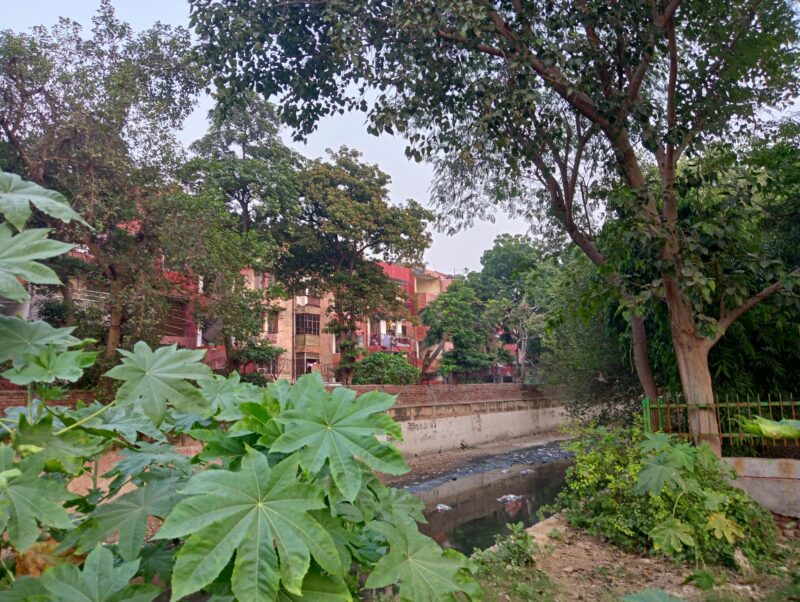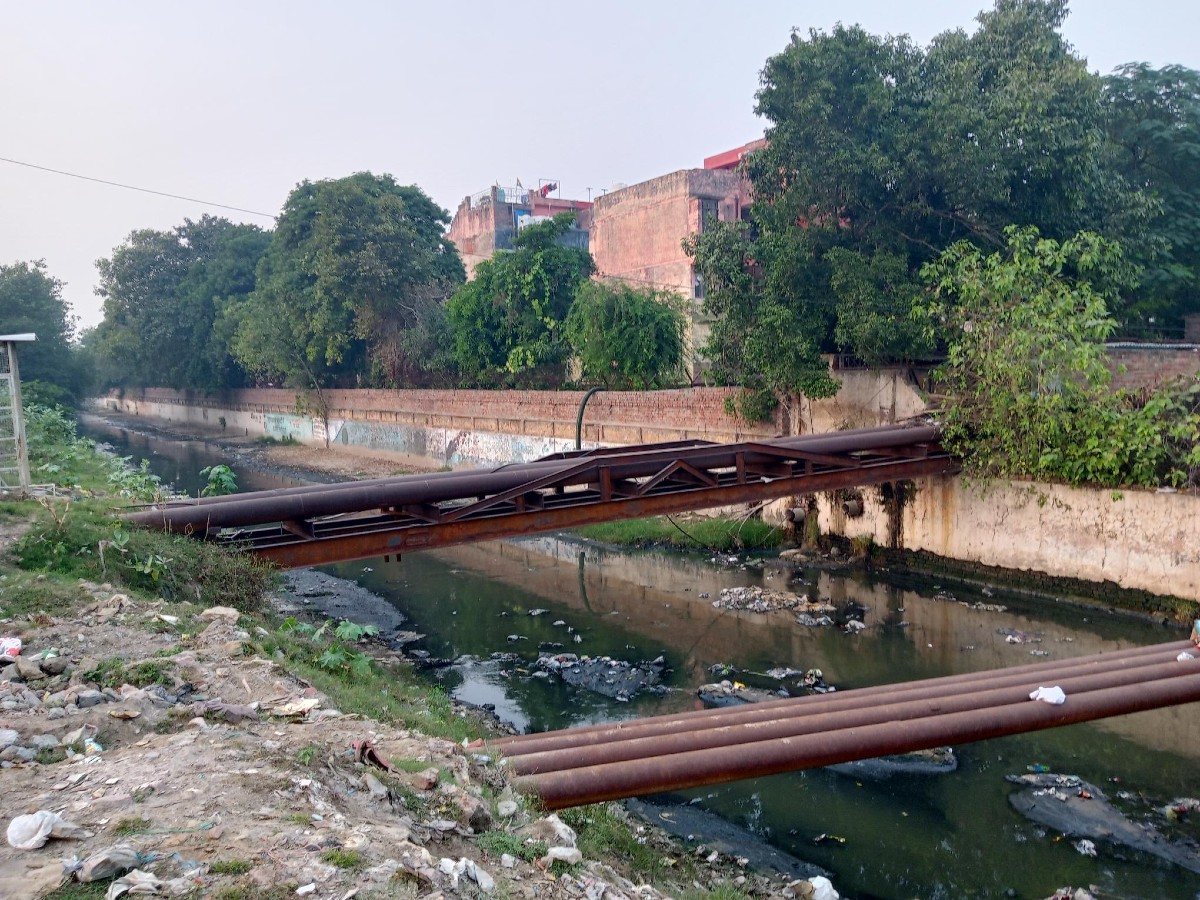A 20-feet-wide open drain separates six sectors – 11, 12, 22, 34, 50 and 94 – in Noida. The Kondli drain originates from Delhi, where it is covered with concrete slab, and passes through Ghaziabad and Noida uncovered.
Thousands of residents complain of daily frustration due to “zero attention” to the issue from the corporation despite their repeated appeals for redressal. “It’s like talking to a wall”, says Meenu Singh, a resident of Dhawalgiri apartments in Noida sector 11.
Also read : Leasing out land for cricket is a good source of income for NCR farmers
Besides being a breeding ground of mosquitoes, the nullah has caused frequent damage to gadgets in the residences adjacent to it, apart from all the toxic fumes and foul smell it gives out.
Gadget damage
When Neeta Sharma moved to Dhawalgiri Apartments, her neighbours warned her that electrical devices would soon begin to malfunction, and so they did. It has been six months since she shifted in and her refrigerator, television and air-conditioner broke down several times.
“First theTV, then the refrigerator and now the AC. We have been asked to make peace with it as this is apparently the norm”, the 42-year-old says.
Her neighbour Vijay Sharma, 67, has been a resident of the area for 25 long years with his family. “We are fed up. Every other day our electronic devices break down. Our day begins with dialling electricians and mechanics because gadgets give up every two-three weeks. There will always be one device that is malfunctioning in the house and the electrician keeps telling us that it is because of the noxious fumes emanating from the nullahs,” he says.
Gases emitted by the drains corrode pipes in air-conditioners, refrigerators and television, making gas leaks a frequent problem. Those who live near the drains are forced to spend thousands of rupees every year for refilling the gas.
The LCD and LED televisions are the first to malfunction out of all the other devices. The family says they shell out around Rs 2,000–4,000, depending on the damage. “Nothing has been done in over two decades now. We don’t buy good quality electronics anymore because what’s the point when they are anyway going to get damaged. At least the mediocre brands have more warranty in comparison to the one year offered by top brands like Sony, LG”, Sharma says.
“Earlier we used to raise the issue quite regularly but then how long can people run from pillar to post when there is no response?” Sharma’s wife Meenakshi says. “Besides, nowadays everyone is working and don’t have time to do all this. Had there been like 200 people on the streets protesting, there still could have been some action”.
Residents of Sector 12 have similar complaints. “The shelf life of equipment also tends to shorten due to the adverse effect of the drains. We are told that the gas emanating from these drains causes damage to electrical goods,” says Mahavir Agarwal, a resident of Sector 14.
Growing concern
An irrigation canal enters Noida from Sector 11, carrying effluents from Shahdara and Ghazipur drains, and these drains carry and empty methane hydrogen sulphide into the Hindon and Yamuna rivers.
Noida residents living in close proximity to the uncovered drain inhale toxic air every day as their apartments are not even 50 metres from the nullah. “If electronic devices can get damaged then imagine what we are inhaling. Maybe even our shelf life is decreasing, we just don’t know it yet,” says Apoorv Kanojia.

The RWA has built high walls bordering the drain to block foul smell emanating from it. However, “it’s not a solution to the other deeper problems”, Kanojia says. Nearly 10,000 residents of the sector, one of the six where the drain passes through, have been living with the foul smell.
“The drain opposite my residence is seldom cleaned and not covered properly. A smell always lingers in the air. In many places, the slab that once may have covered the drain is broken or missing. We are inhaling this toxic air daily”, says Harish, a resident of sector 22.
Property prices down
For Manish Ahluwalia, selling his house has become a huge problem because of the drain. “Those who live on the other side of the society get better rates for their property than those who live adjoining the drain. The difference is almost Rs 5 lakh. I want to leave this area and sell off my property, but there are no suitors. It’s like you are trapped here”, he says.
The 65-year-old lives alone in Dhawalgiri after the death of his wife three years ago. “It’s a den of mosquitoes. Fumigation is done by the corporation once in six months – what difference does that make? When we bought the house three decades ago, it wasn’t like this. We never thought that we would suffer like this”, he says.
Neeraj Mishra, son of RWA president of the apartment block Ashok Mishra, says that the problem has been left unaddressed for years now, but the “situation is better with the high walls”. Their family earlier used to live closer to the drain, but moved to the other side two years ago. “It’s definitely a problem, but not the way it is being described. However, we are trying our best to check it.”
Follow us on:
Instagram: instagram.com/thepatriot_in/
Twitter: twitter.com/Patriot_Delhi
Facebook: facebook.com/Thepatriotnewsindia





